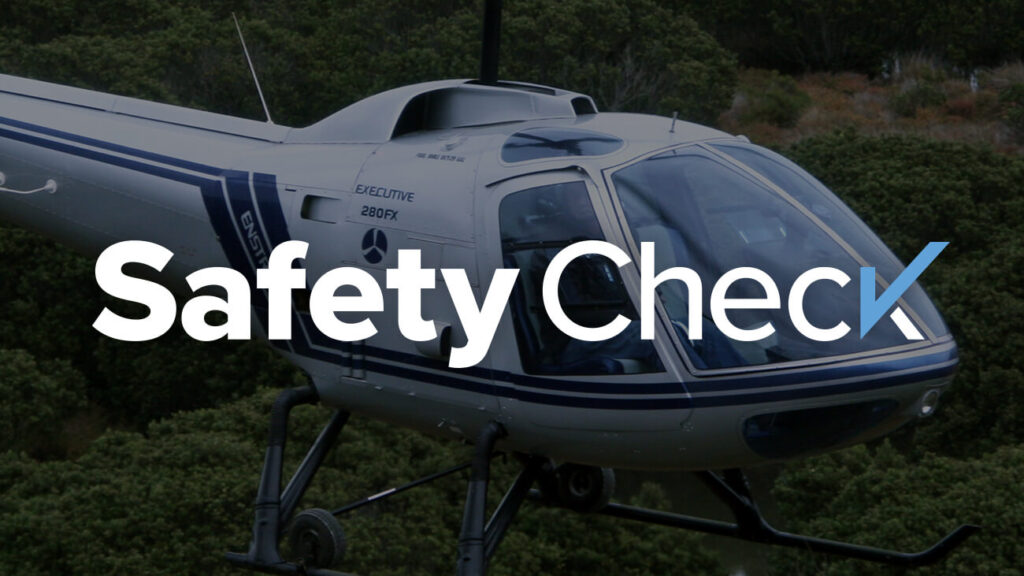Safety Check – What is a true formation flight?

Recently we had a client request an aerial tour of a property in central Indiana. The flight request involved multiple helicopters. During the pilot safety briefing, it was discussed having one pilot who would make the radio calls on behalf of the other aircraft. Knowing this would be a revenue flight we could not be in any type of formation so it was decided to do in trail spacing and we departed in 30-second intervals.
So, what does define “formation flight?” The Federal Aviation Regulations (“FARs”) use the term in 14 CFR 91.111, but nowhere in the FARs do they define it. Since the term is not self-defining, it is legally ambiguous, and one must look outside of the FARs to determine exactly what the agency meant and what you can and cannot do (under certain circumstances) under the regulations.
FAR 91.111, 91.146, and 91.153 are the only mention of formation flying in the regulations. There is no requirement for communication during the flight – 91.111 just requires that all pilots agree to operate in formation, not operate so close as to create a hazard, and carrying passengers for hire is prohibited. It is not unusual in a formation flight for the lead aircraft to be on the ATC frequency and the other aircraft to be monitoring a discrete air-to-air frequency between themselves. I do know that ATC treats true formation flights differently. They effectively treat it as one aircraft with the other aircraft instructed to have their transponders squawk “stand-by.”
I found a court case where the FAA had taken enforcement action against the Collin’s Foundation, the operator of a World War II era B-24 aircraft, and the Captain of a Northwest Airlines Boeing 747. The flight occurred on July 12th, 1998. The pilot of the B-24 had coordinated with the Captain of a NWA 747 en route from Japan to MSP. This was the Captain’s retirement flight and his best friend was the pilot of the Collin’s Foundation B-24, the Liberator. Due to the nature of the flight it appeared to be a formation flight with the B-24 leading the NWA 747 to the runway at MSP. The well-reasoned analysis of the Board of the NTSB in their Order shed new light on what is factually and legally necessary to constitute a true, “formation flight.” Based on the fact-intensive circumstances of the flight the Board determined that the Collings Foundation and Captain of the NWA flight did not intend nor conduct a formation flight and that there is a distinct difference between an “escort” flight and a formation flight. In the end, the law judge dismissed the charge and the Administrator did not appeal the finding.
Since the FARs are so loosely defined I turned to the AIM for more guidance. The AIM is more of a reference and not enforceable by the FAA. To summarize the AIM, a formation flight is a standard formation whereas one or more pilots have made prior arrangements, ATC operations will be as a single aircraft for navigation and position reporting (i.e. one transponder code and the other aircraft in “standby” mode), one designated flight leader and maintenance of a standard distance between the aircraft that is no more than one mile laterally or longitudinally and a hundred feet vertically except for transitional maneuvers.
There is a time and place for formation flying. It is usually at air shows with waivered airspace and formally trained flight crews. I spoke to a friend who is an FAA inspector and a member of the FAAST Team, he said the safest practice for multiple helicopters is to do a detailed briefing that includes all the pilots and make the prior arrangements. Determine an altitude and spacing that doesn’t create a collision hazard and confirm the flight is not carrying passengers for hire. Be prepared to abort the formation if something doesn’t feel right. Always err on the side of safety.
The old way of thinking ATC won’t see you are long gone. One of the old-timer Enstrom owners joked he would turn his transponder to stand-by when he felt the urge to “buzz” his girlfriends’ home. With ADS-B satellite technology the FAA has precise flight tracking capabilities and it can be used as evidence for those pilots that believe rules are made to be broken.
Fly safe.

Randy is a dual rated Airline Transport Pilot with 13,000 flight hours in airplanes and helicopters. He has type ratings in the BE400 and CE500. Randy has been a rotorcraft Designated Pilot Examiner representing the Grand Rapids FSDO since 2014. Currently he works for Sweet Helicopters, a northern Indiana Part 135 air carrier operator and serves as the Airport Manager of the Goshen Municipal Airport.
About Enstrom Helicopter
From Rudy Enstrom’s early designs in 1943 to initial testing in a Michigan Quarry in 1957 to aircraft operating on six continents, Enstrom Helicopter Corporation has maintained a reputation for safety, value and performance. Based in Menominee, Michigan and proudly made in the United States, Enstrom has a rich history for design innovation. The goal is to provide helicopters to the customer’s exact specification and deliver support and maintenance worldwide.